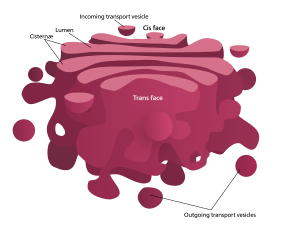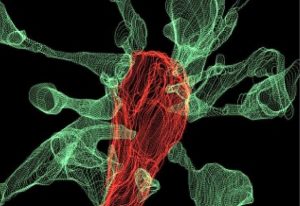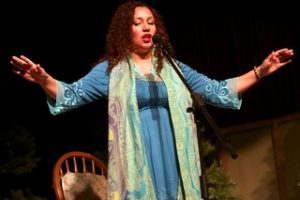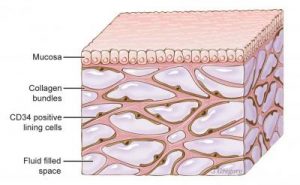Why does the Golgi apparatus looks so weird? (5.5 min)
A love story analogy for muscle contraction? (8 min)
Don't forget the Alexa skill for this podcast! (2 min)
If you cannot see or activate the audio player click here.
Follow The A&P Professor on Twitter, Facebook, Blogger, Nuzzel, Tumblr, or Instagram!
(0:47) The Golgi apparatus has a distinctive flattened shape. It turns out that it's the functioning of the cytoskeleton that is responsible.
- Why the Golgi Apparatus Looks So Funny (Kevin's blog post)
- GOLPH3 bridges phosphatidylinositol-4-phosphate and actomyosin to stretch and shape the golgi to promote budding. (research article)
- Golgi's Job Stretches it Thin (article from Science News)
- Terminologia Histologica: International Terms for Human Cytology and Histology (book plus CD)
- Terminologia Histologica: International Terms for Human Cytology and Histology (online version)

(6:02) Kevin tells the story of actin and myosin as an analogy to a classic love story. This playful story reflects the focus of recent episodes about the use of storytelling and analogies in teaching A&P.
- Episode 12: Storytelling is the Heart of Teaching A&P (introduces the strategy of storytelling)
- Episode 13: Playful and Serious is the Perfect Combo for A&P (introduces the value of playful analogies)
- Survival Guide for Anatomy & Physiology (Kevin's brief manual for A&P students features a version of the actin-myosin love story)
- Excitation-Contraction Coupling in Skeletal Muscle: A Love Story? (article from HAPS Educator with a version of this story)
- Metaphors & Analogies: Power Tools for Teaching Any Subject (book that addresses many issues, including English-language learners)

(17:50) Don't forget the Alexa skill for this podcast!
- Enable the Alexa skill (Kevin's instructions on how to enable and use the new skill for this podcast; includes a video)
- Alexa skill (Amazon's page for this Alexa skill)
- Alexa-enabled devices (Amazon's devices that use Alexa skills; purchases made through this link help fund this podcast)
If the hyperlinks here are not active, go to TAPPradio.org to find the episode page.
- More details at the episode page.
- Transcript available at the script page.
- Listen to any episode on your Alexa device.
Click here to listen to this episode—or access the detailed notes and transcript.







